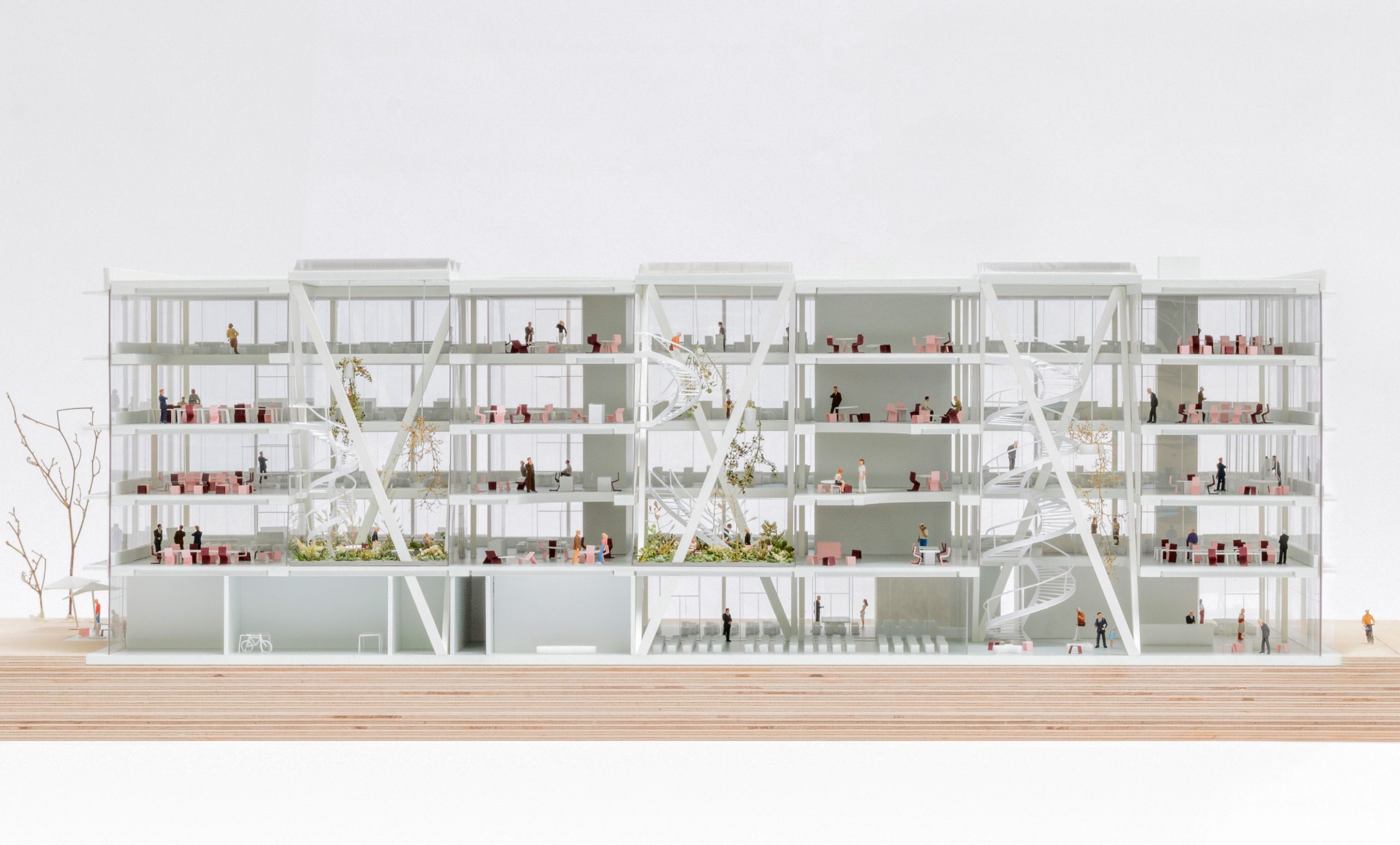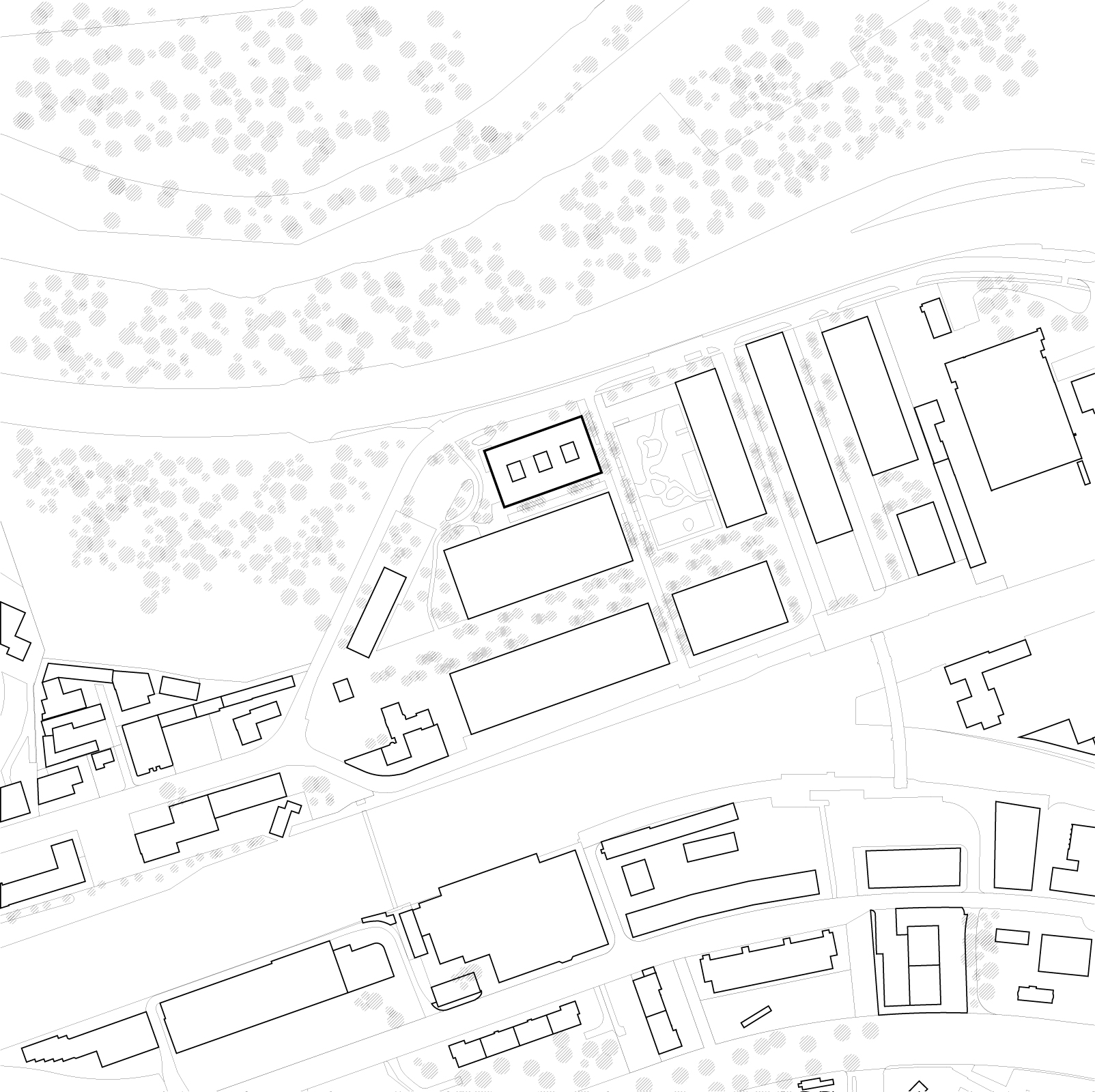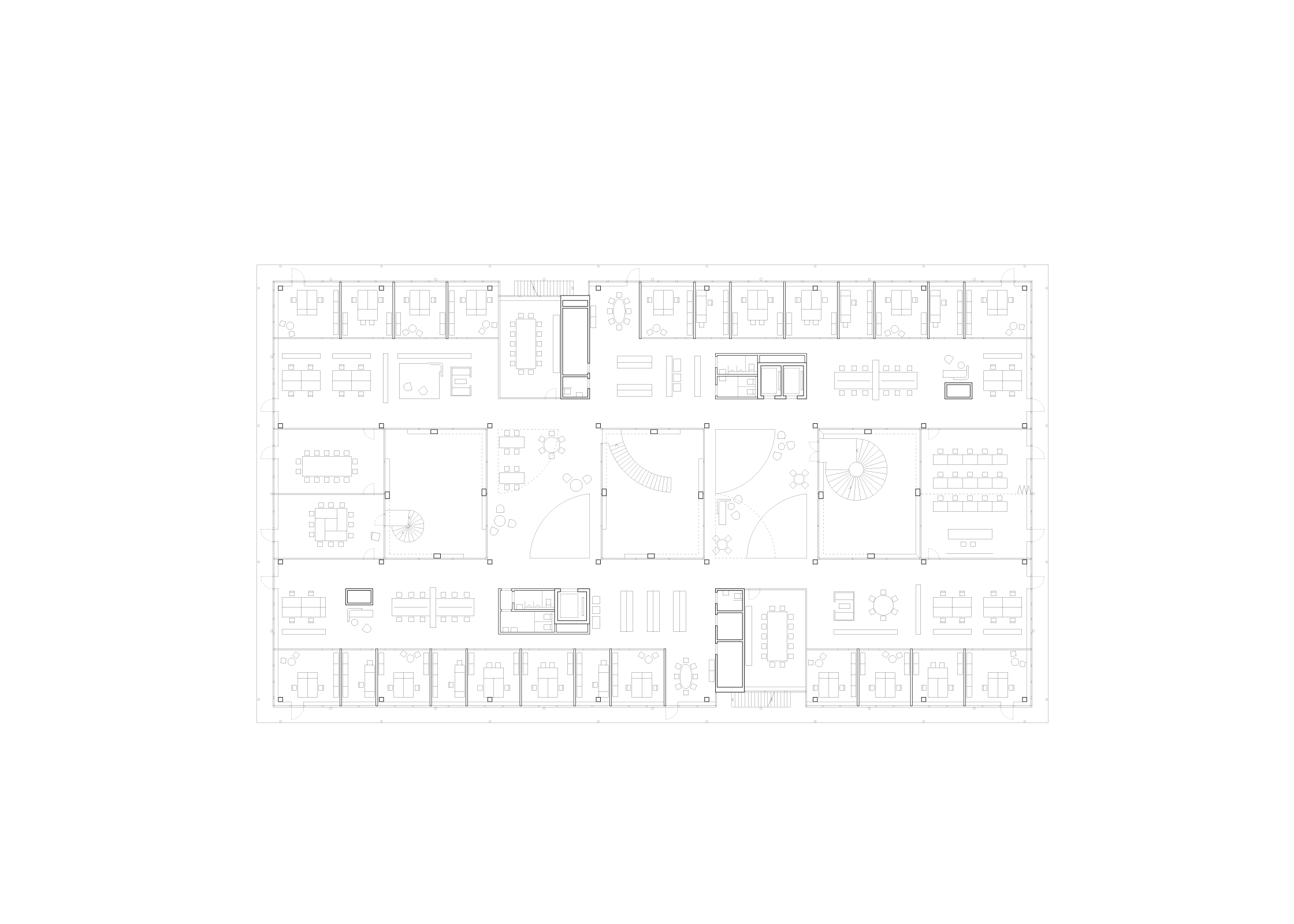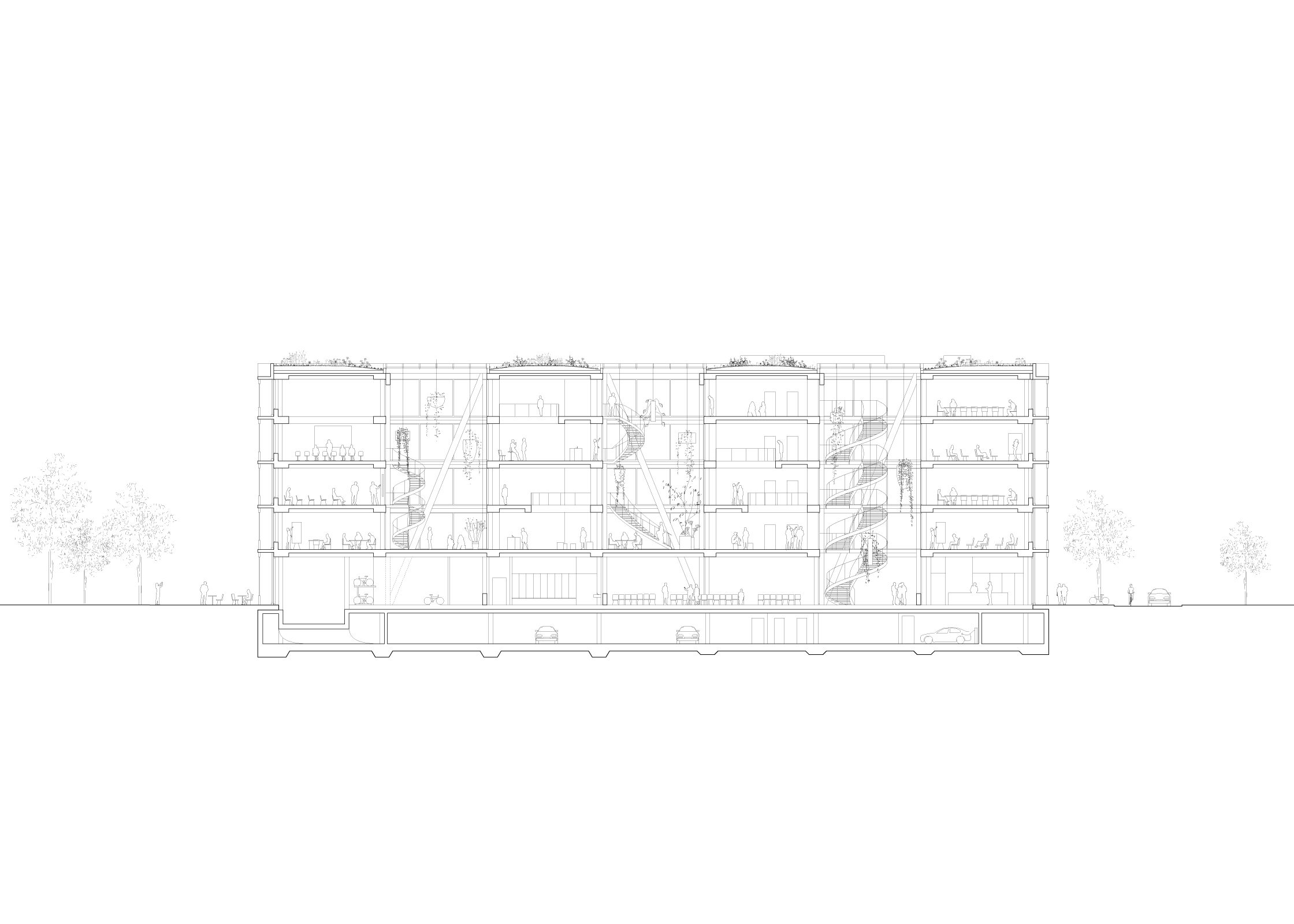| Project | SNF Headquarters |
| Year | 2020 |
| Location | Bern |
| Program | Administrative |
| Type of Procurement | Invited Competition |
| Status | Competition |
| Client | Swiss National Fond (SNF) |
| Size | 12'000 m2 |
| Cost | 40 Mio |
| Team | Jeannette Kuo, Ünal Karamuk, Saida Brückner, Zofia Roguska, Thomas Rohrer, Pawel Bejm, Olga Cobuscean |
| Consultants | Construction Management: Archobau |
To design a workplace today, and in particular the headquarters for the SNF, requires thinking beyond just the standard issues of comfort and efficiency. If work can now happen almost anywhere, the choice of coming into work is above all for the experiences that define a collective culture. It encompasses the many collaborative formats, the flexible structures, as well as the informal exchanges that contribute to the collective experience of a typical workday. This condition is even more intensified in the culture of the SNF, an organization whose core mission in supporting scientific research requires that it takes on the role of a mediator and communicator (vermittler) between various experts and stakeholders. From the evaluation of a grant application to the hosting of scientific conferences, the SNF is all about exchange. The new building at Wankdorf is an opportunity for the SNF to define not only the image of the organization for future years but to also define their own organizational culture.
The building is an agile and flexible machine, a performative machine that departs from the monumentality of those that represent the top-down structures of the past. Rather, it is a lightweight machine that celebrates the diverse and changing humanistic activities of the organization. From the outside, the egress balconies are suspended from the roof and give a lightweight expression to the building. At the same time, they act as sunshading to minimize the hours of direct solar heat gain. The design considers sustainability as a holistic and integrated approach that regulates and organizes a building across its entire lifespan. This starts with the daily comforts and necessities of the inhabitants and stretches towards the consideration of how a building may need to adapt or renew over the many years of its life. But above all, a building needs to be able to offer an atmosphere and an identity that give value to the social life within – a quality which will be necessary for the longevity of its use.











